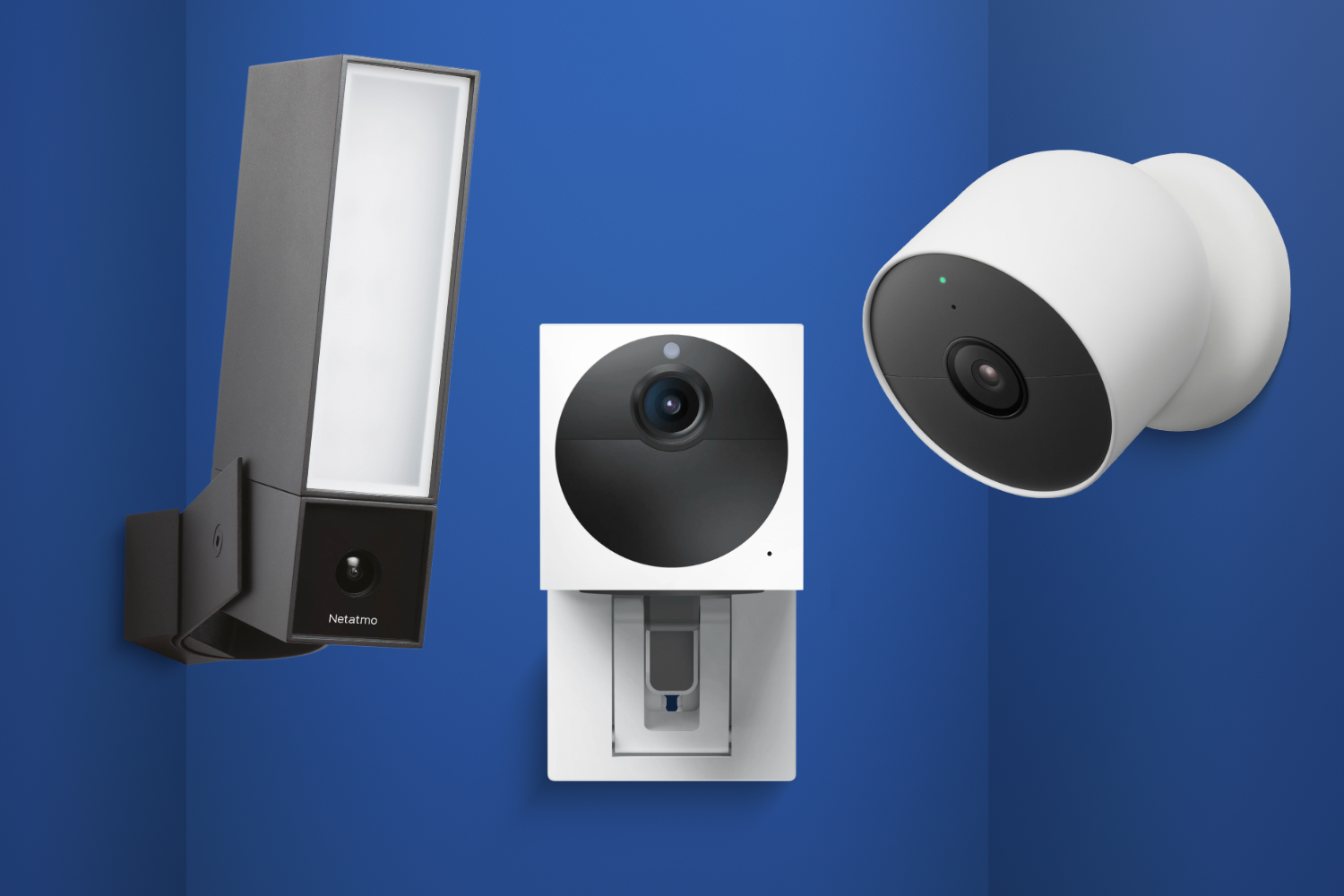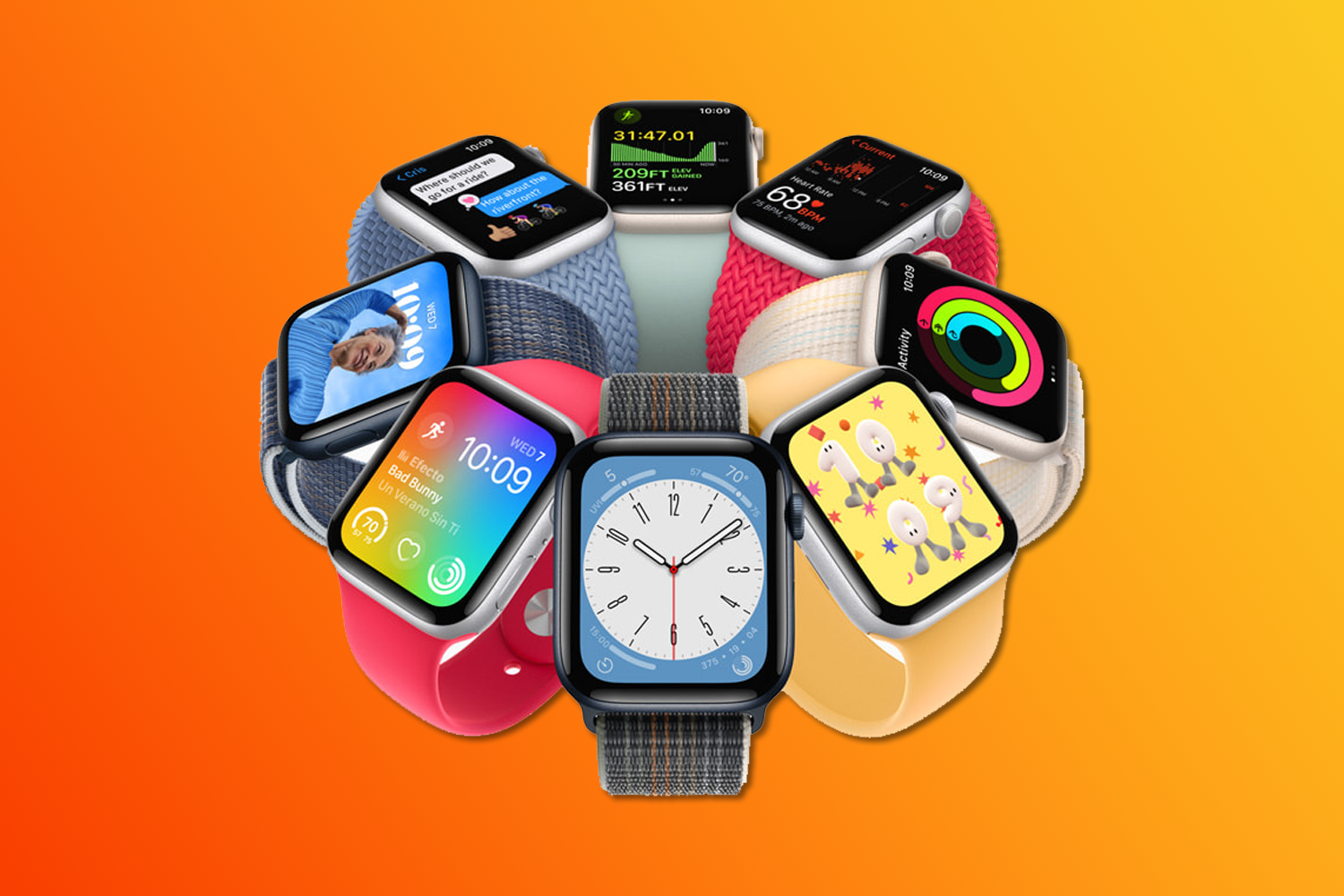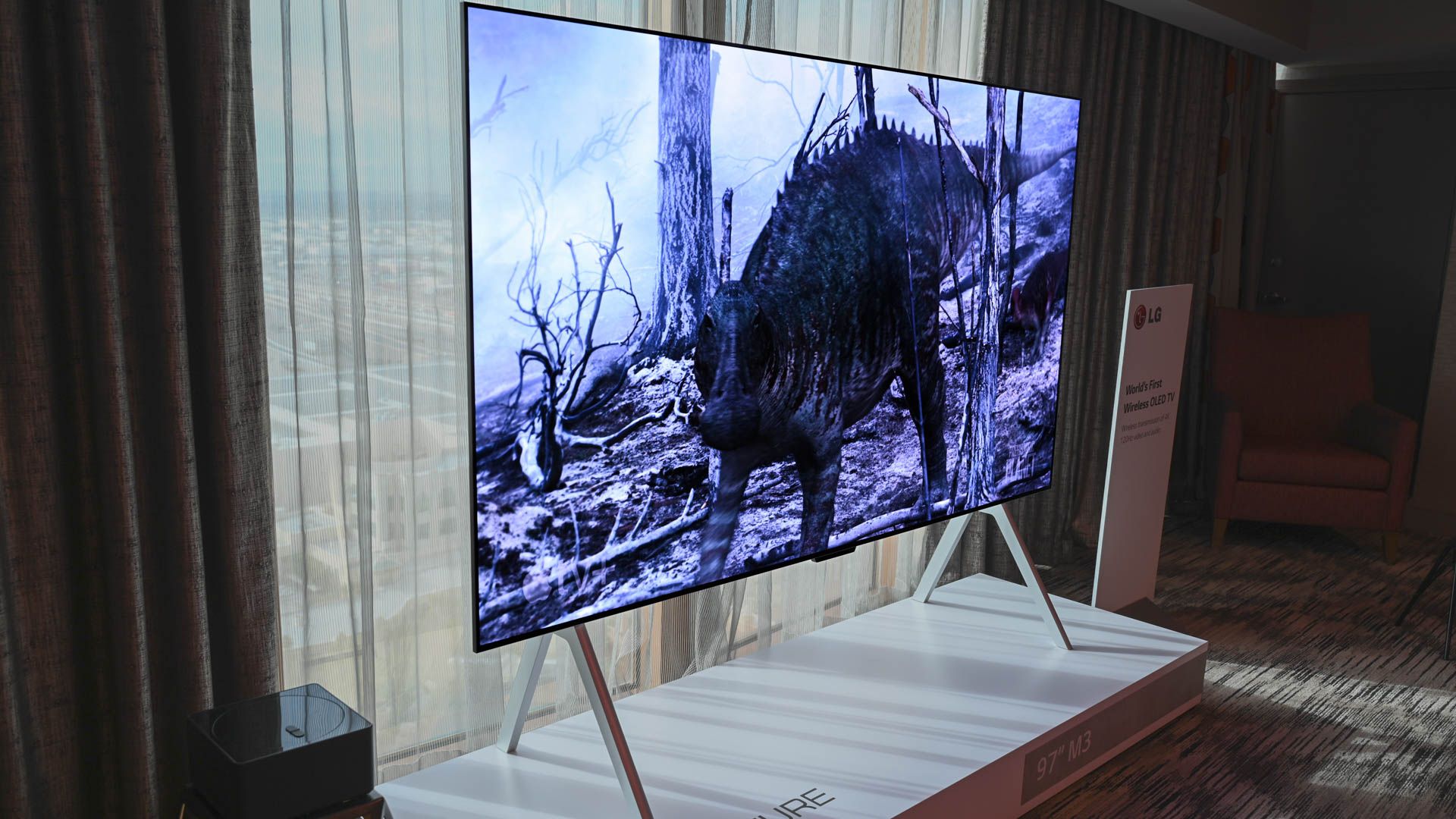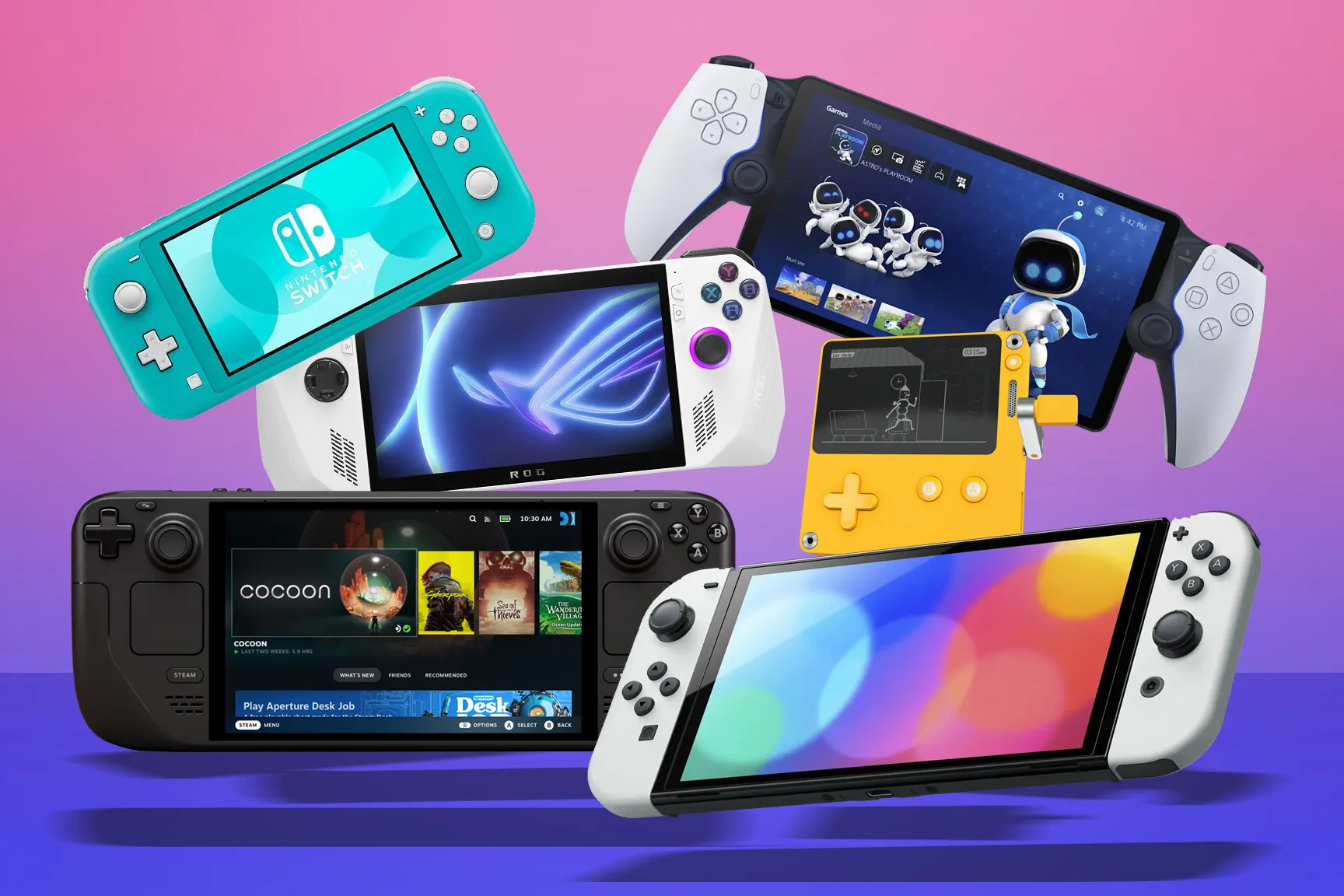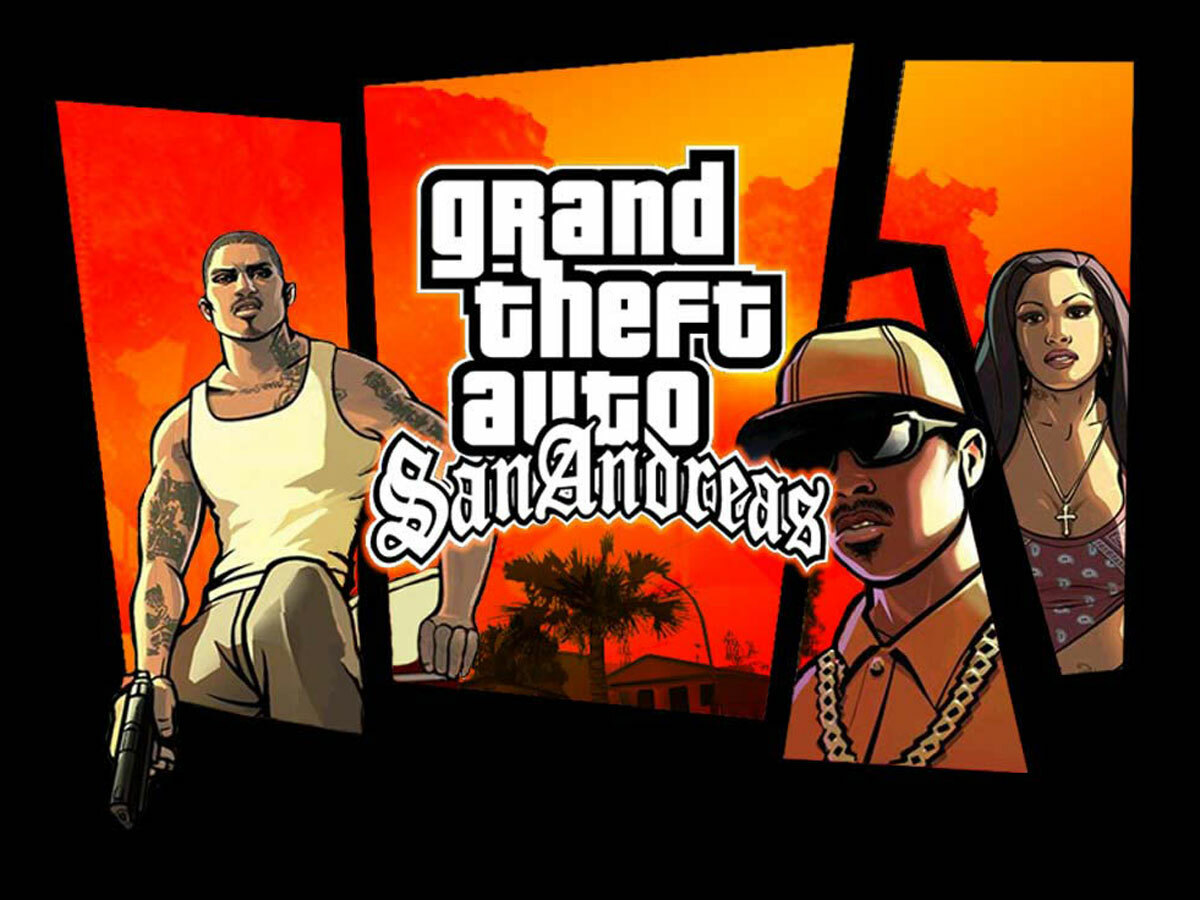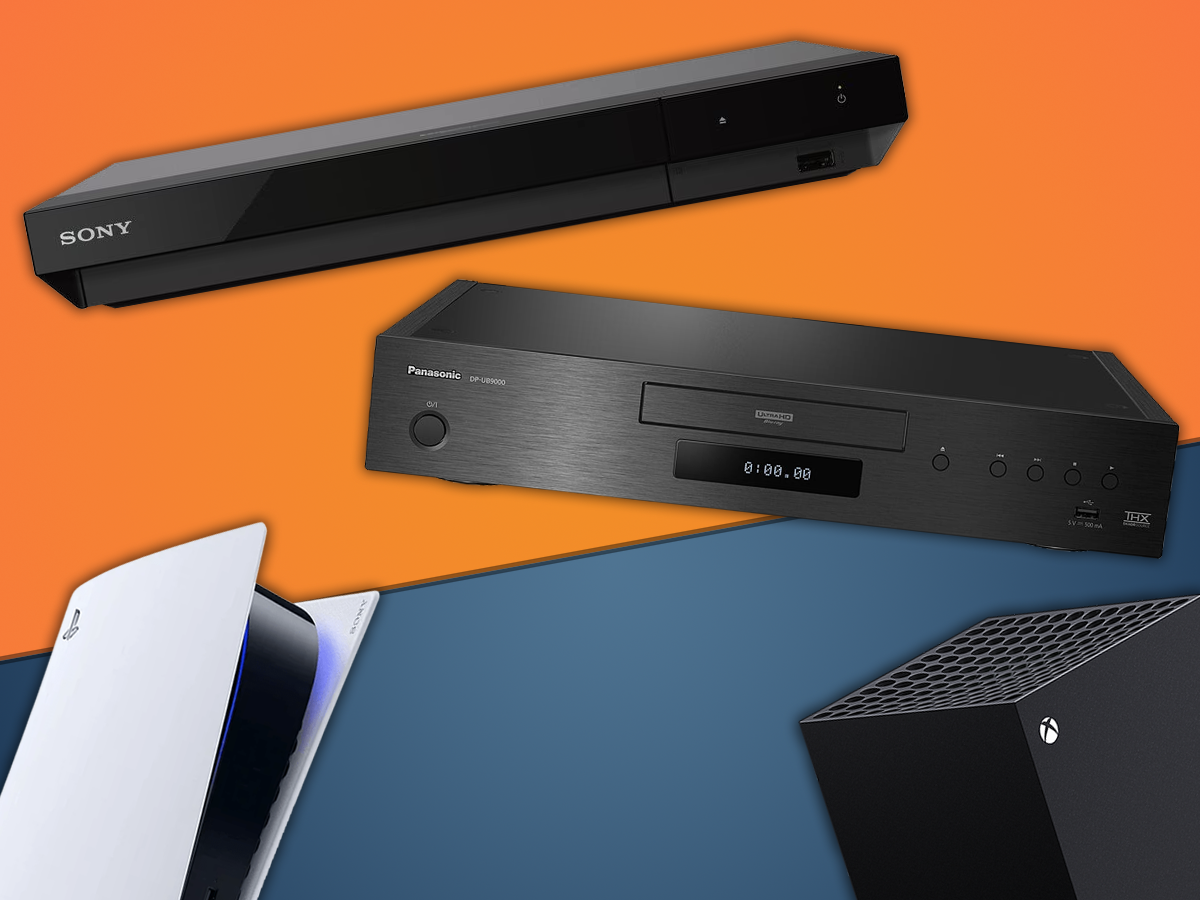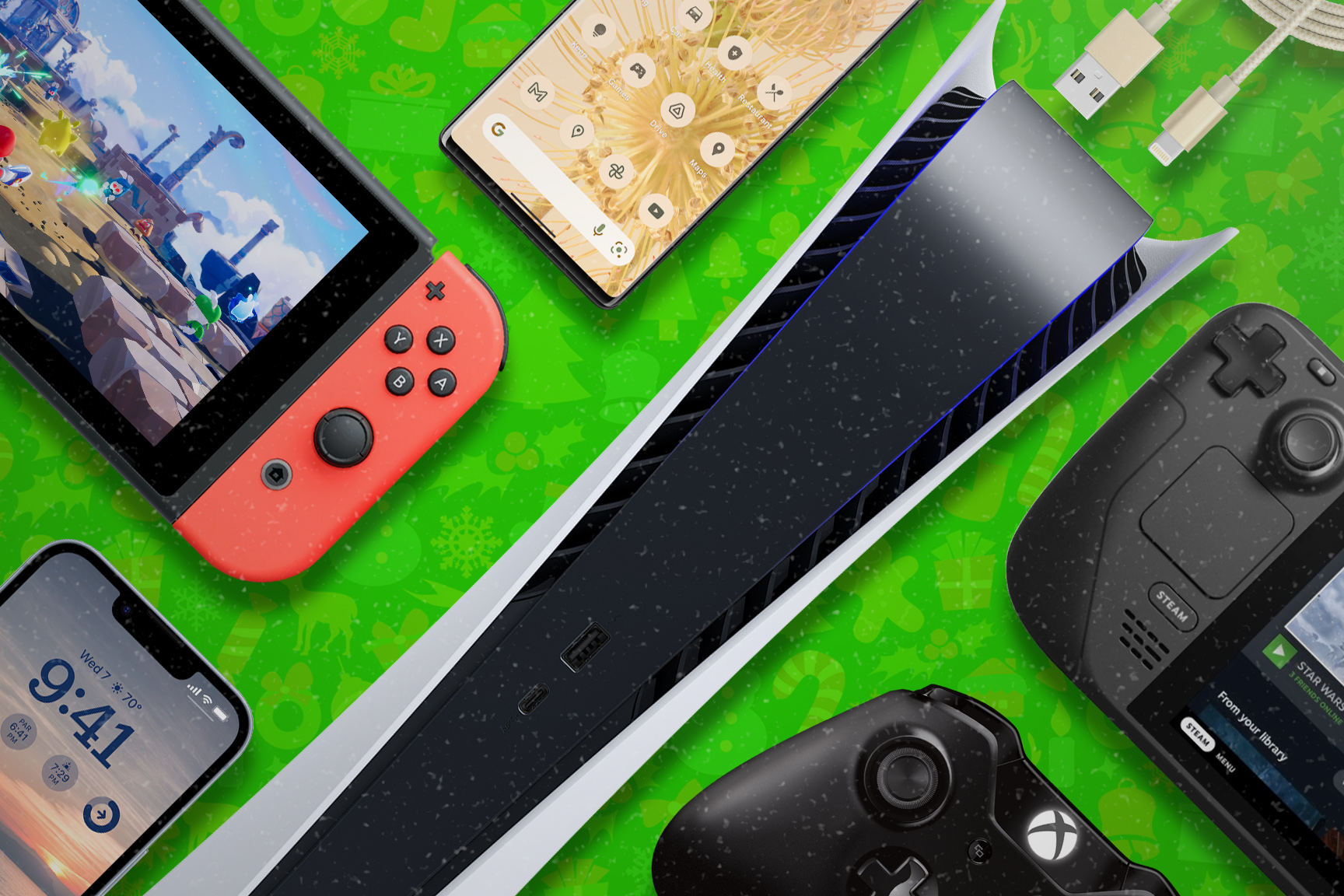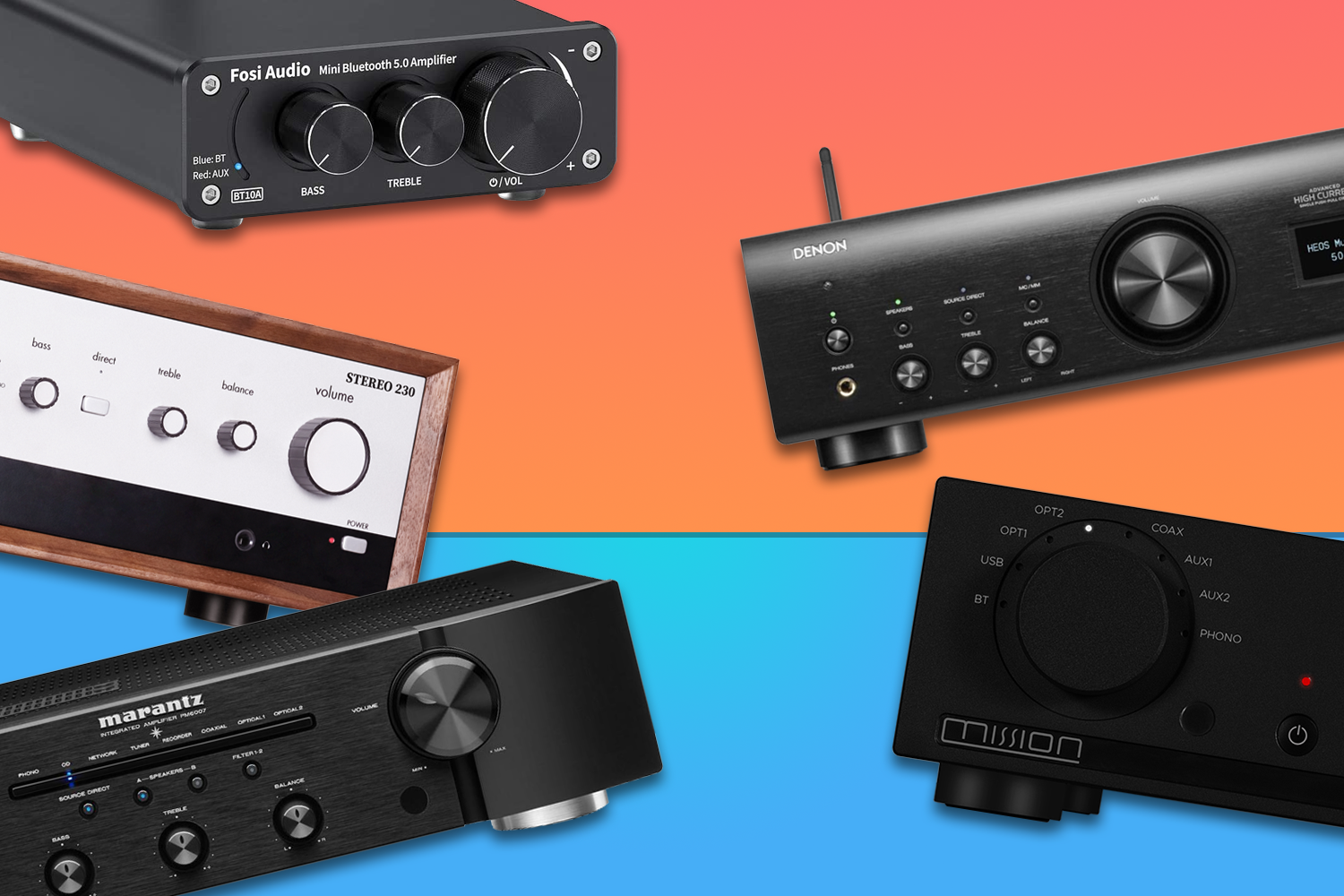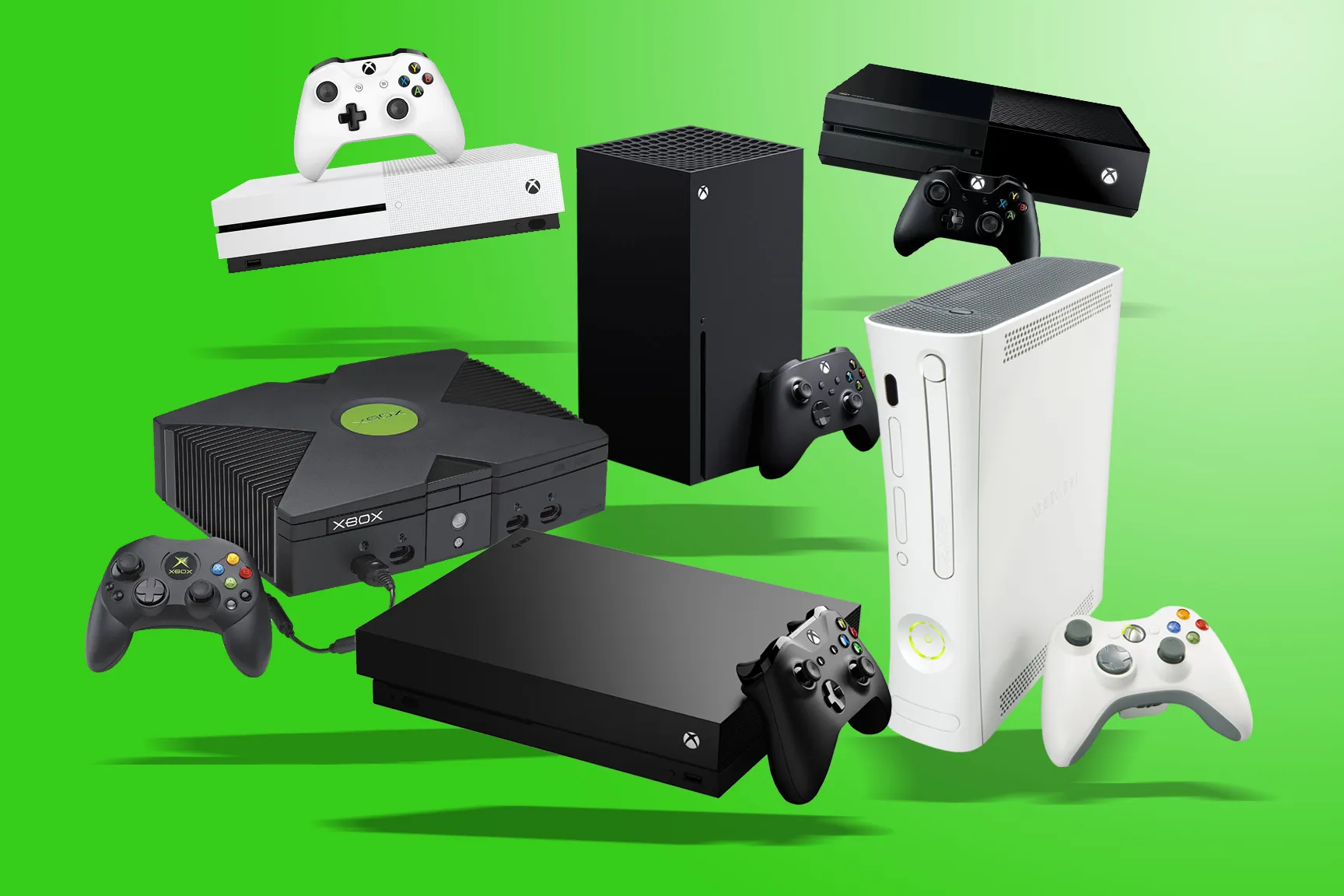Handheld gaming is having a moment. If you’re looking for the best way to play your games on the go, you’ve come to the right place. From big hitters like the Switch and Steam Deck, to powerful Windows machines, cloud-based creations and curios like the Playdate, we’ve reviewed the best handheld gaming console you can buy right now.
To test the best handheld gaming console contenders, we use them in every situation we think you will. That meant long sessions on the sofa, dealing with our backlogs in bed, killing time during flights and even booting up a game in the park. We monitor battery life, inspect display tech, crank up settings where possible, use every control option, and obsess over grams.
Black Friday 2024 is almost here, and we’re busy covering the best deals across the web. Whether you’re looking for a new phone, laptop, or stick vac, we’ll be highlighting the biggest savings around.
Check out the early Amazon Black Friday deals (US) and the early Amazon Black Friday deals (UK)
So, whether you’re after something compact and fun or a gaming powerhouse, read on to discover the best handheld console for your needs.
Why you can trust Stuff: Our team of experts rigorously test each product and provide honest, unbiased reviews to help you make informed decisions. For more details, read how we test and rate products.
Quick list: what’s the best handheld gaming console?
The best handheld gaming console you can buy today:
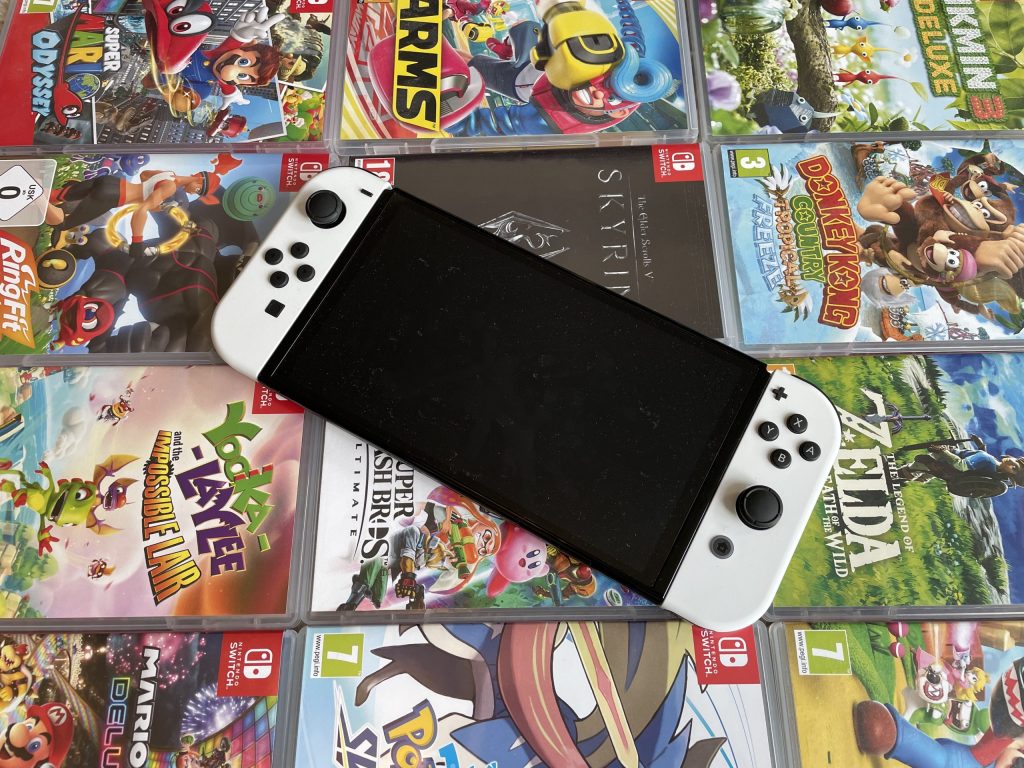
1. Nintendo Switch OLED
| Nintendo Switch OLED specs | |
|---|---|
| Display | 7in OLED, 1280×720 resolution |
| Storage | 64GB (expandable via microSD |
| RAM | 4GB |
| Battery Life | 4.5 to 9 hours |
| OS | Custom Nintendo OS |
| Dimensions | 102mm x 242mm x 13.9mm (4.02in x 9.53in x 0.55in), 320g (0.71lbs) (420g with Joy-Cons attached – 0.93lbs) |
The hybrid nature of the Nintendo Switch means you don’t even need to use the Switch OLED as a handheld device – but you’re wasting its best feature if you don’t. As with most gadgets, an OLED display is transformative, especially given the vibrant colour palettes of many of Nintendo’s games. Super Mario Bros. Wonder or The Legend of Zelda: Tears of the Kingdom absolutely pop off the screen. Nintendo also fixed the kickstand with its OLED revision, making tabletop mode a far more viable way to play, and we were fairly impressed with the speakers too.
The Switch OLED isn’t a perfect device. Battery life is merely fine, there are more ergonomically pleasing handhelds, and the ageing hardware often has a difficult time with third-party console ports. Nintendo is surely working on a successor, which may (or may not) see a 2025 reveal – and there’s no guarantee of backwards compatibility. But thanks to a truly incredible software library comprising some of the best games ever made, a clean, simple UI, and that gorgeous 7in 720p OLED display, there simply isn’t a better all-round handheld console out there.
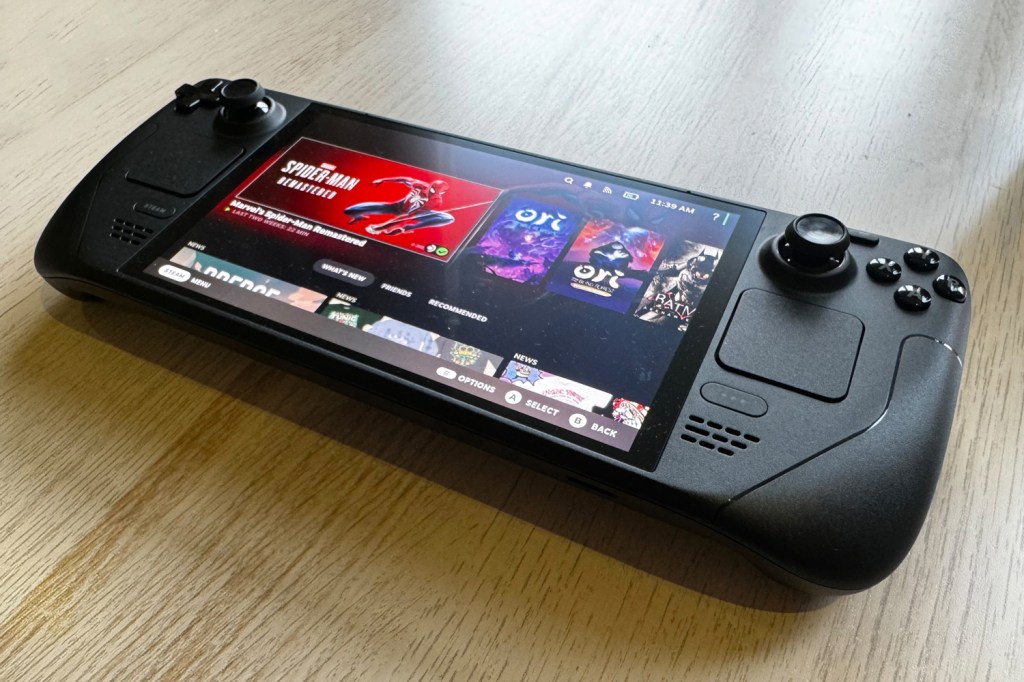

2. Steam Deck OLED
| Steam Deck OLED specs | |
|---|---|
| Display | 7.4in, 1200×800 HDR OLED w/ 90Hz, 1000 nits brightness |
| Storage | 512GB/1TB NVMe SSD, microSD expansion |
| RAM | 16GB RAM |
| Battery Life | 3-12 hours |
| OS | SteamOS 3 |
| Dimensions | 298mm x 117mm x 49mm (11.73in x 4.61in x 1.93in) Approx. 669g (1.47lbs) |
We really liked the original Steam Deck, despite not being overly impressed with its weight, battery life or LCD display. All three were addressed by Valve with the Steam Deck OLED, making the first effort feel a bit like a rough draft in comparison. The new larger 7.4in HDR display, with its 1000-nits maximum brightness, has been blowing us away since we started using the device. It has hugely improved contrast and colours, while OLED’s trademark inky blacks make it hard to go back to LCD. The Deck OLED is also slightly lighter than Valve’s first effort, which you definitely do notice, and it lasts longer between charges too.
The Steam Deck OLED is a handheld PC, but its custom-built OS makes it feel like a console in all the right ways. If you want to access your Steam library with minimal faff you can; desktop mode then welcomes tinkerers who want to emulate old games and install other launchers.
Not every game will function as you want it to out of the box, and the Deck struggles to run modern AAA titles with any finesse. It’s also still a big bulky handheld, which might prove too much to handle for smaller hands. But if you want to play PC games portably, the Steam Deck OLED is our top pick. And if you want to save some cash, the equally powerful LCD model is still available at a lower price.
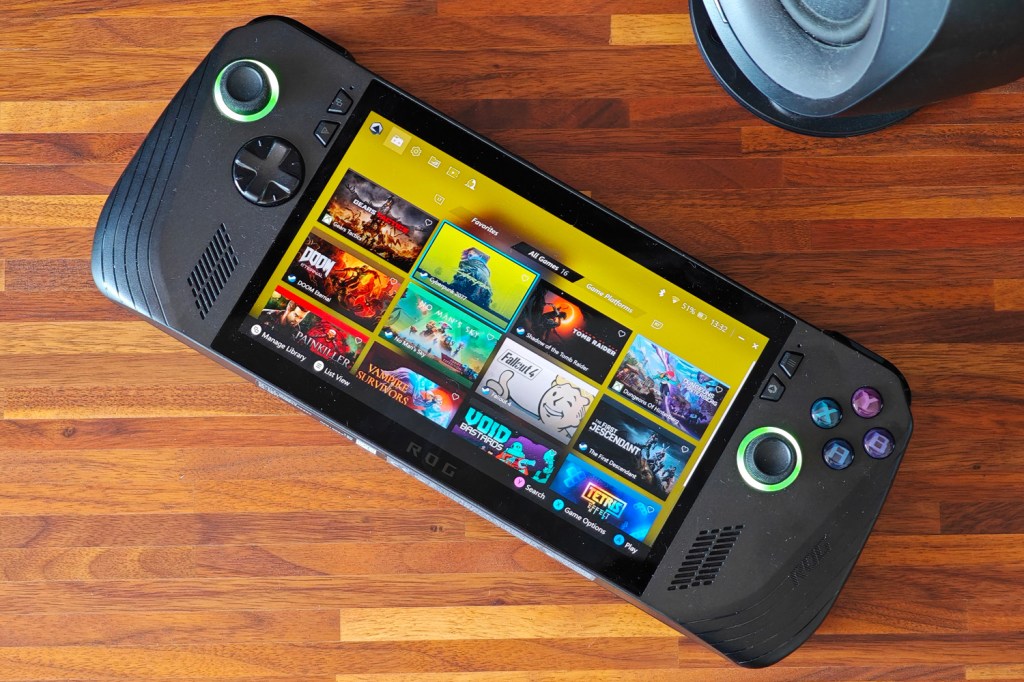

3. Asus ROG Ally X
| Asus ROG Ally X specs | |
|---|---|
| Display | 7in, 1920×1080 (120Hz) |
| Storage | 512GB PCIe 4.0 SSD (expandable via microSD) |
| RAM | 16GB LPDDR5 |
| Battery Life | 2 to 6 hours |
| OS | Windows 11 |
| Dimensions | 280mm x 113mm x 39mm (11.02in x 4.45in x 1.54in) 608g (1.34lbs) |
If you’re new to the whole PC gaming handheld thing, and want to play more than just your Steam library without messing about with Linux, the Asus ROG Ally X is now the obvious choice. It lasts longer than the original, has an easily upgradeable SSD, and more RAM than any Steam Deck. The refined ergonomics also put both the MSI Claw and Lenovo Legion Go in the shade.
It’s not perfect: Windows 11 still doesn’t feel entirely happy on a small screen, and the display’s colours and contrast aren’t a match for the Steam Deck OLED – even if the Ally’s higher resolution and refresh rate levels the playing field a bit. The price is a lot spicier than Valve’s handheld, too – it’s now almost in gaming laptop territory.
Original ROG Ally shouldn’t be in a rush to upgrade, then, and the Steam Deck OLED remains my top pick – but the gap is narrower than ever.
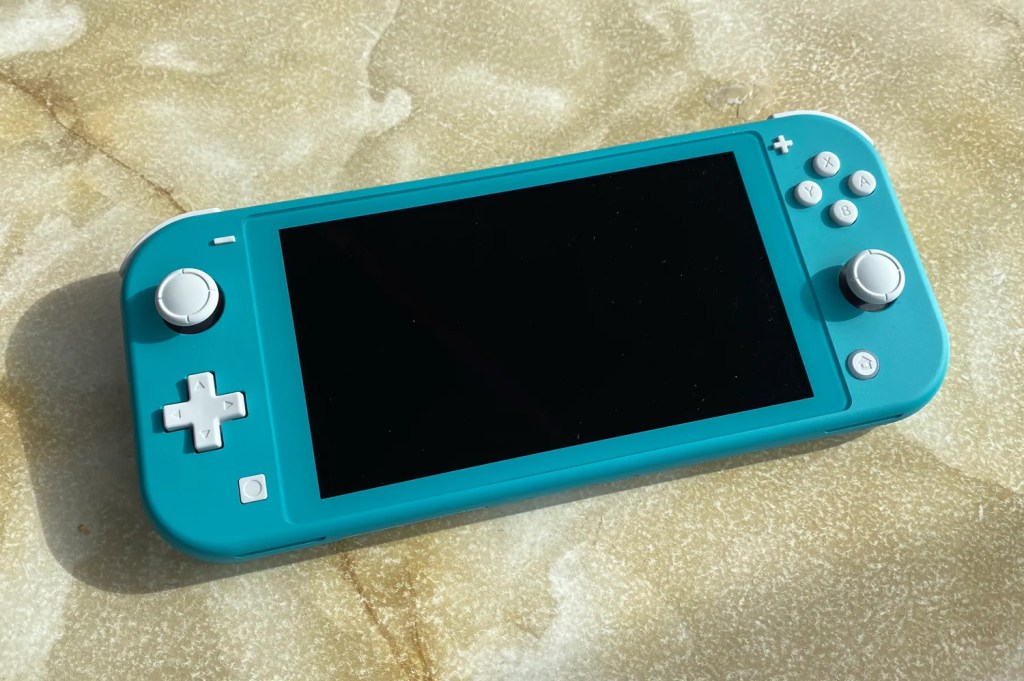

4. Nintendo Switch Lite
| Nintendo Switch Lite specs | |
|---|---|
| Display | 5.5in LCD, 1280×720 resolution |
| Storage | 32GB (expandable via microSD) |
| RAM | 4GB |
| Battery Life | 3 to 7 hours |
| OS | Custom Nintendo OS |
| Dimensions | 91.1mm x 208mm x 13.9mm (3.59in x 8.19in x 0.55in) 275g (0.61lbs) |
In another arena, you might knock the Nintendo Switch Lite for lacking the big screen credentials of its pricier bigger brothers. Here, though, we’re exclusively about handheld consoles, which is exactly where the Switch Lite really sings. Its lighter weight and smaller design not only make it more comfortable to hold than the big Switch, but more portable to boot. You even get a proper D-pad here, which the standard model lacks, arguably making the Lite the retro platformer champ.
Once you’ve played games on the Switch OLED it’s really hard to look at the Switch Lite’s 5.5in LCD screen, but if you can overlook its inherent inferiority it’s still a great display. And keeping the same 1280×700 resolution on the smaller panel means games look even sharper.
Battery life is decent enough, and the fantastic Switch library is just as good here as it is on the regular Switch. You just have to ask yourself if you’ll miss the ability to dock it to a TV, or Joy-Con-exclusive features like HD Rumble. If a handheld is all you want and you can live without OLED, the Switch Lite is an excellent and affordable option.
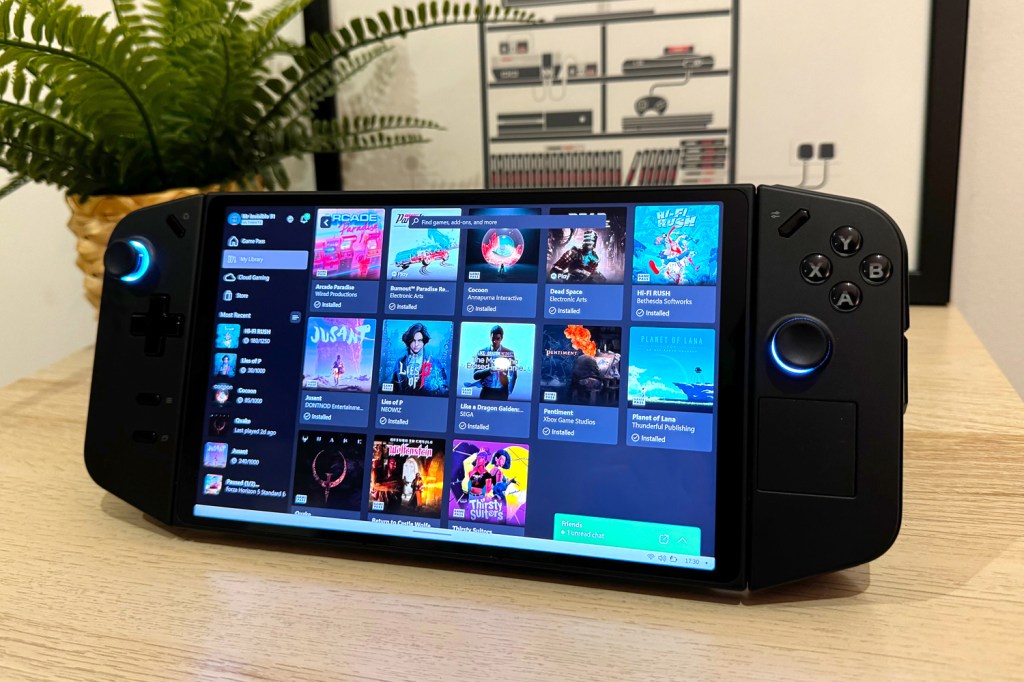

5. Lenovo Legion Go
| Lenovo Legion Go specs | |
|---|---|
| Display | 8.8in, 2560×1600 (144Hz) |
| Storage | 512GB SSD (expandable via microSD) |
| RAM | 16GB LPDDR5X |
| Battery Life | 2 to 6 hours |
| OS | Windows 11 |
| Dimensions | 299mm x 131mm x 21mm (11.77in x 5.16in x 0.83in) 854g (1.88lbs) |
The Lenovo Legion Go makes its case with an enormous and quite stunning 8.8in, 1600p, 144Hz display and Switch-esque detachable controllers. A novel FPS mode then turns one of them into a vertical mouse. It works well and definitely makes you feel more accurate than when playing with analogue sticks.
Like the ROG Ally you can run pretty much any game you like thanks to Windows. When it works you can have a lot of fun with Lenovo’s handheld, but we didn’t like the clunky Legion Space software. Most games can’t run well at the highest native resolution either. If they do, they’ll zap the battery dead in no time.
Still, if you’re a Game Pass subscriber you can turn the Legion Go into a portable Xbox with a great screen. That’s a major advantage over the Linux-based Steam Deck, which can only stream Xbox Game Pass via the cloud unless you go through the messy process of installing Windows.
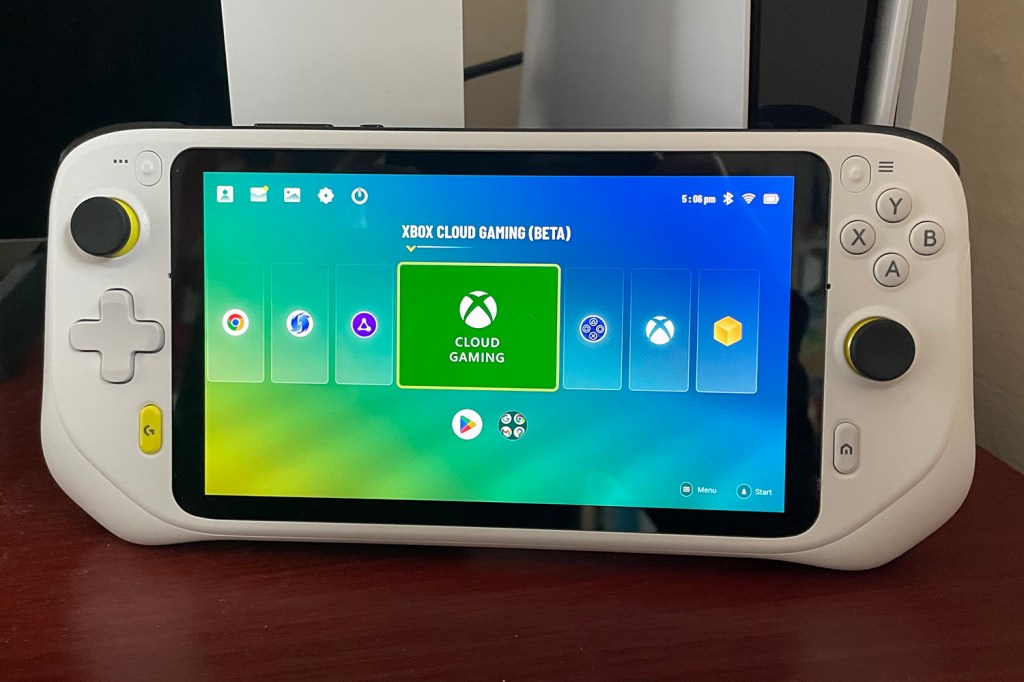

6. Logitech G Cloud
| Logitech G Cloud specs | |
|---|---|
| Display | 7in IPS LCD, 1920×1080 (60Hz) |
| Storage | 64GB (expandable via microSD) |
| RAM | 4GB LPDDR4X |
| Battery Life | Up to 12 hours |
| OS | Android-based with cloud gaming support |
| Dimensions | 256.84mm x 117.21mm x 32.95mm (10.11in x 4.62in x 1.3in) 463g (1.02lbs) |
This Android-based handheld comes with most of the major cloud gaming services (including Game Pass) pre-installed. It’s comfortable to hold and has a very decent 7in, 1080p display. But beyond the built-in controls, there isn’t a lot it can do that the phone likely sitting in your pocket right now can’t.
Whether you should buy one, then, depends on how much you already make use of apps like Xbox Cloud Gaming or Nvidia’s GeForce Now. There’s no doubt that playing Starfield is less fiddly on a dedicated gaming device than it is on your phone. If both your internet speeds and Wi-Fi strength are good enough, it can be pretty great. Plus the G Cloud is just an Android tablet at its heart, so you can download mobile games to play offline, too.
With servers in the cloud doing the heavy lifting, battery life is strong – up to 12 hours if you aren’t running many games natively. Some people will always be skeptical about cloud gaming, and there’s no denying that the G Cloud is an odd device – and not a cheap one either. But if you’re all in on game streaming this handheld ticks a lot of boxes.


7. PlayStation Portal
| PlayStation Portal specs | |
|---|---|
| Display | 8in, 1920×1080 LCD w/ 60Hz |
| Storage | N/A |
| RAM | N/A |
| Battery Life | 6 – 8 hours |
| OS | Proprietary (for streaming PS5 games) |
| Dimensions | 337mm x 150mm x 95mm (13.27in x 5.91in x 3.74in) 400g (0.88lbs) |
Sony has a long history with handheld consoles, but the PlayStation Portal is not another PSP or Vita. In fact, unless wirelessly connected to your PS5 it’s about as useful as a brick. The Portal streams games from your console, exactly as your phone does when using the PS Remote Play app (which is free). The difference here is that you get proper DualSense controls on either side of the 1080p 60fps display that you play your games on.
The PlayStation Portal is an unapologetically niche device, primarily aimed at PS5 players who regularly have to give up the TV to someone else in the house. If your home Wi-Fi isn’t fast enough you’re likely going to experience performance issues. That said, we really like playing PS5 games on that large and bright display, without having to give up the DualSense’s haptics and adaptive triggers. Battery life is surprisingly decent too.
As it isn’t really designed to be used outside the house and can’t do cloud streaming of any sort, the PS Portal is a slighter offering than a lot the devices on this list. But if you’re in the target market and your broadband is up to the job, it might just be the handheld you’re looking for.
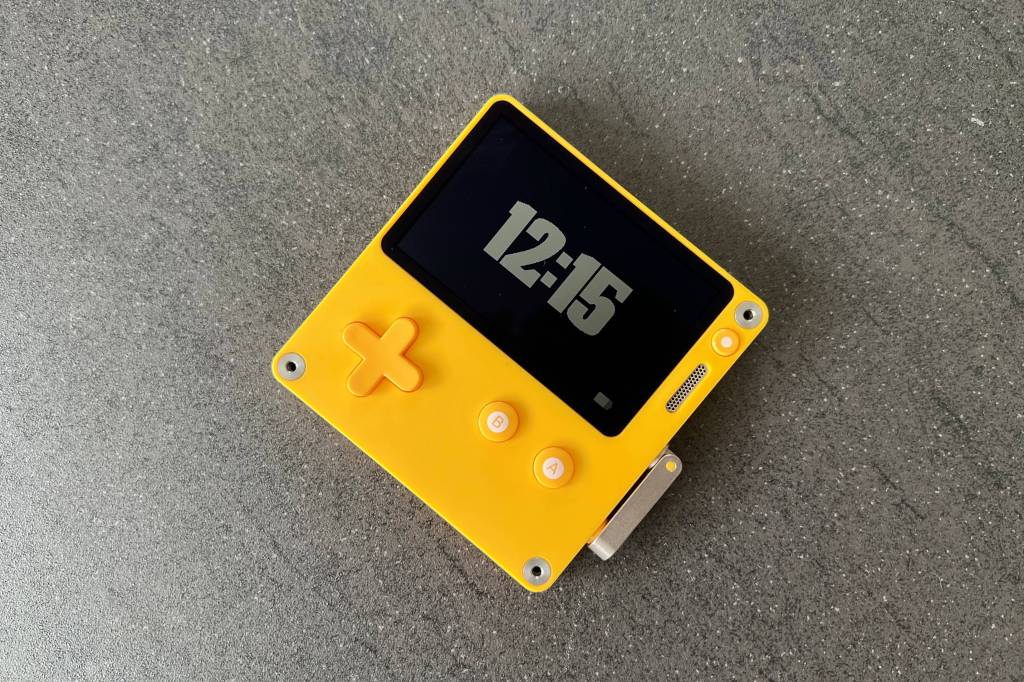

8. Panic Playdate
| Panic Playdate specs | |
|---|---|
| Display | 2.7in black-and-white LCD, 400×240 resolution |
| Storage | 4GB |
| RAM | 16MB |
| Battery Life | Up to 14 days standby; 8 hours active play |
| OS | Custom OS for Playdate |
| Dimensions | 76mm x 74mm x 9mm (2.99in x 2.91in x 0.35in) 86g (0.19lbs) |
The Playdate is very different from every other handheld console on this list. Rather than replicating the big-screen gaming experience on a portable device, its library consists exclusively of bespoke titles, most of them making use of its unique crank controller.
This is an intentionally low-tech toy. Its black and white display isn’t even backlit and the majority of its games are bite-sized experiences, best played for a few minutes at a time rather than a few hours.
It is, then, a decidedly more niche proposition than the Switch or Steam Deck. But if you like collecting beautiful objects, of which the cheerful yellow Playdate is undoubtedly one, and enjoy something a bit different from your handheld gaming, you can’t go wrong.
How to choose the best handheld gaming console for you
As the above list attests to, the handheld console market is wide-ranging and varied, so Stuff is here to help you make the right choice based on your gaming habits.
The first thing to consider is what games you want to play. If Nintendo’s famous lineup of first-party franchises – we’re talking Mario, Zelda and Pokemon – appeal to you, you have to go with a Switch. You can’t play these games anywhere else, and because the Switch has been such an enormous success, the third-party support is far better than it was on the Wii U or even the Wii before it. Nintendo has really gotten behind the indie scene too.
If you’re more of a PC or Xbox person, and have amassed a huge library of Steam games over the years, you might want to go for a Steam Deck OLED or one of the Windows handhelds instead. These devices are also far more open than the Switch, making them better picks for tinkerers who want to emulate retro games. And perhaps you only look to handheld gaming for quickfire fun on your lunch break, in which case you might get more enjoyment out of the Playdate.
Once you’ve decided what you want to play, you need to think about how you want to play it. If screen size, resolution and performance are important to you, something like the Asus ROG Ally or Lenovo Legion Go might be your dream device, even if battery life leaves a lot to be desired. And battery life is hugely important for handheld gaming, given that you’re often playing games on the go where a power source may not be available. The Switch doesn’t have incredible battery life, but it lasts longer than the power-hungry PC handhelds. You should also consider the size and weight of the device, especially if your hands are on the smaller side.
The last thing is price. The Nintendo Switch Lite costs less than US$200 / £150 and has an endless library of superb games, while a top spec Lenovo Legion Go costs nearly as much as a gaming laptop. If you’re going to be forking out for the latter, you should know in advance that you’re going to make use of all that tech. Similarly, if you want a streaming-first handheld, make sure you’re able to feed it the Wi-Fi speeds it demands.
And maybe you’ve decided that you don’t need a handheld gaming device at all and actually want a home console to sit under your TV instead, in which case you should head to our rated list of those right now.
If you’re interested in the best console, we’ve got another feature that focuses on precisely that. We’ve also rounded up the best retro handhelds for old-school thrills, the best gaming headsets and the best gaming laptops.
How do handheld gaming consoles compare to traditional home consoles?
Handheld and traditional home consoles have unique strengths and weaknesses that cater to different types of gaming. Handheld consoles are designed for portability, enabling gamers to play on the go. Their compact, lightweight design includes built-in screens and controls, making them convenient for travel or casual gaming sessions away from home. In contrast, home consoles are larger, stationary devices that connect to a TV or monitor, providing a more immersive gaming experience with higher resolution and larger screens.
Which handheld gaming console has the best game library?
We think the Nintendo Switch has the best games library of any handheld console. It offers a diverse and extensive selection of games, including critically acclaimed first-party titles such as The Legend of Zelda: Breath of the Wild, Super Mario Odyssey, and Animal Crossing: New Horizons. The Nintendo Switch also enjoys strong third-party support, featuring popular titles like Minecraft and Fortnite, which appeal to a broad range of gamers.
In addition to its impressive lineup of first-party and third-party games, the Nintendo Switch is known for its robust selection of indie games. The platform has become a favourite among indie developers, resulting in a rich array of unique and innovative titles.
If that wasn’t enough, the Switch also offers access to a growing library of classic games from previous Nintendo consoles through its Nintendo Switch Online service, providing a nostalgic experience for long-time fans.
If you’re looking to play more graphically intensive games, the Steam Deck may be the better option, with its access to a vast PC game library through Steam, including AAA titles, indie games, and early access releases
What’s the best handheld gaming console for kids?
We think the best handheld gaming console for kids is the Nintendo Switch Lite. It’s compact, lightweight, and designed purely for handheld play, making it perfect for little hands. With a vast library of family-friendly games like Animal Crossing, Super Mario, and Pokémon, it provides hours of entertainment. Unlike the full-size Switch, the Lite is more affordable, which is great if you’re worried about durability or the potential for drops. It also lacks detachable Joy-Cons, so it’s sturdier in one piece and easier for younger kids to manage.
Parental controls are robust, allowing you to set playtime limits, restrict online access, and control what games are accessible. Battery life is solid, ensuring long gaming sessions without constant recharging. While it doesn’t support TV docking, the Lite’s portability and fun-first design make it a fantastic option for kids who love gaming on the go.

